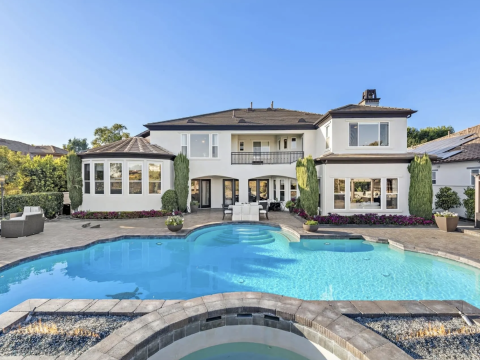14 WAYS TO INSPIRE COLOR IN AN ALL WHITE KITCHEN

CONTINGENT: WHAT DOES IT MEAN IN REAL ESTATE?
February 10, 2022
HOW STAGING CAN AID IN THE SALE OF YOUR HOME
February 23, 2022Colorful kitchens aren’t for everyone, but every kitchen may benefit from a splash of color. Adding color to a white kitchen is a great way to strike a balance between quiet and boisterous.
While white kitchens have a controlled, crisp, clean air to them, if not properly thought, they may appear sterile or uninteresting. A touch of color may transform otherwise white kitchen ideas into a more joyous, personality-filled area.
ADDING COLOR TO AN ALL-WHITE KITCHEN
There are several methods to add color to a white kitchen, ranging from soft neutral accents to vibrant blasts of color.
1. PERSONALIZE YOUR LOWER UNITS
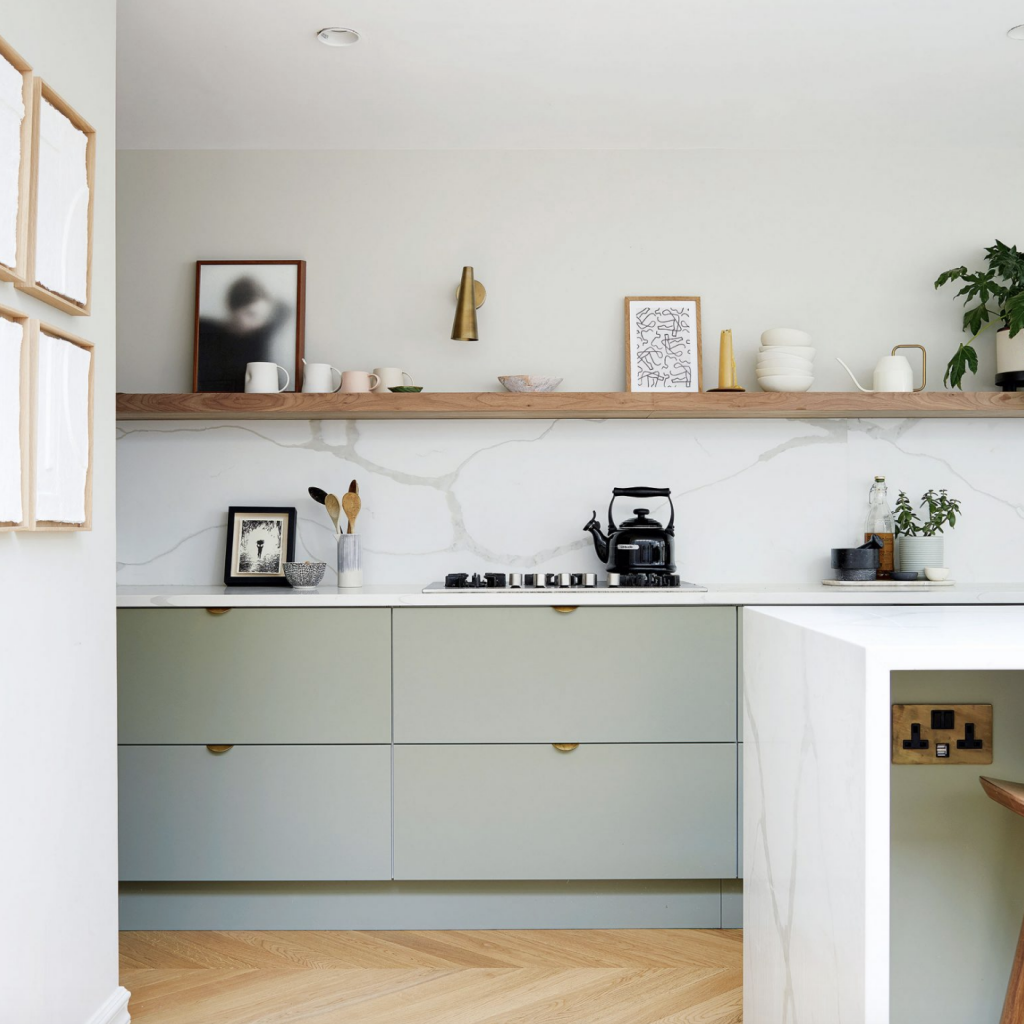
Cabinetry takes up a lot of room in the kitchen, and with an all-white layout, you’re staring at row after row of plain white doors. Taking a slightly different approach to some of these cabinets is a lovely way to start adding color to a white kitchen.
Upper cabinets and work surfaces should remain white. Then select a different color for the bottom storage containers. For subtlety, use a delicate or pastel tone, or a strong hue for impact. Whichever of the various kitchen color schemes you choose, the height ensures that it does not seem too in your face or is visible from all sides.
2. INCLUDE CONTRAST IN WORK SURFACES
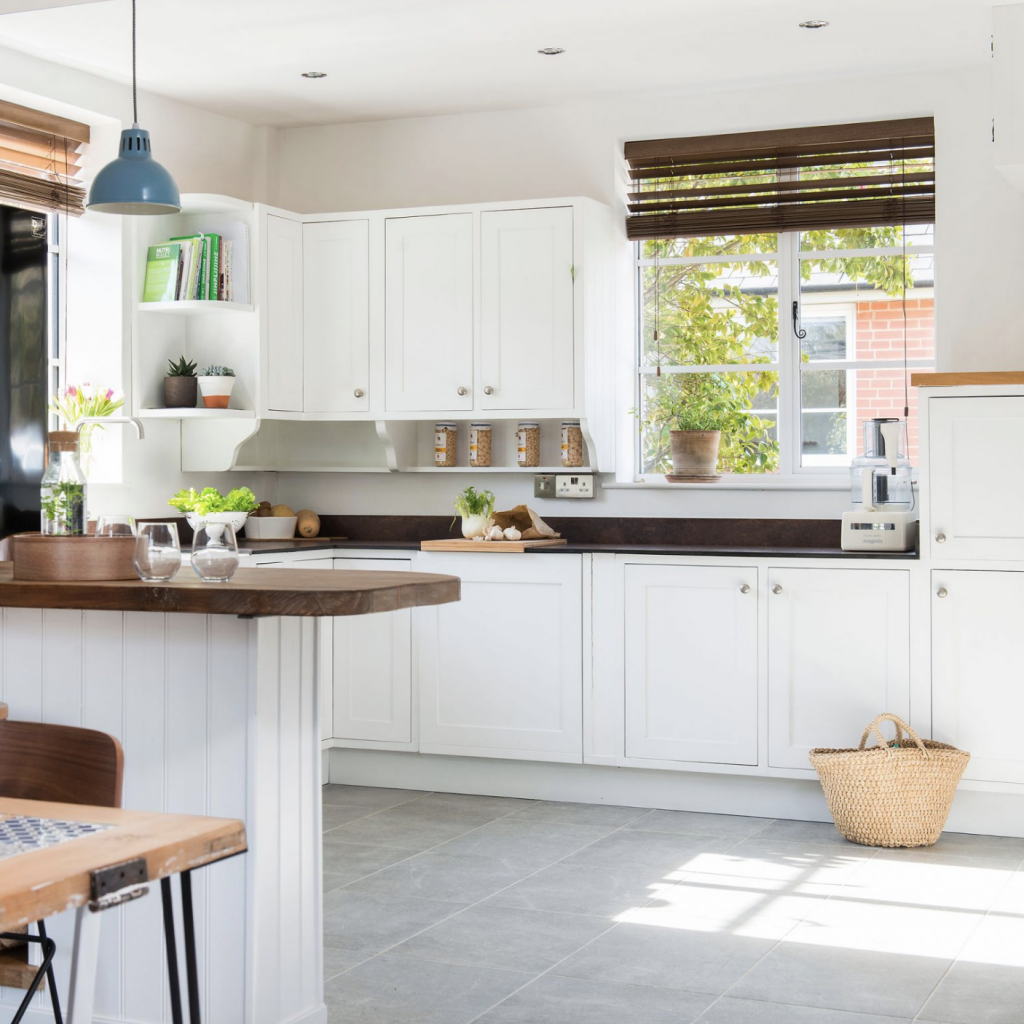
Choosing a dark, contrasting work top to sit above the white cabinets and below the white walls is a subtle way to give a little something to otherwise white kitchen ideas. Choose a dark wood for a more rustic look, or a black stone for a more modern look.
Make these items feel at home by coordinating the hue with other elements in the kitchen, such as chairs, window coverings, and small appliances.
3. SELECT A COLORFULL BACKSPLASH
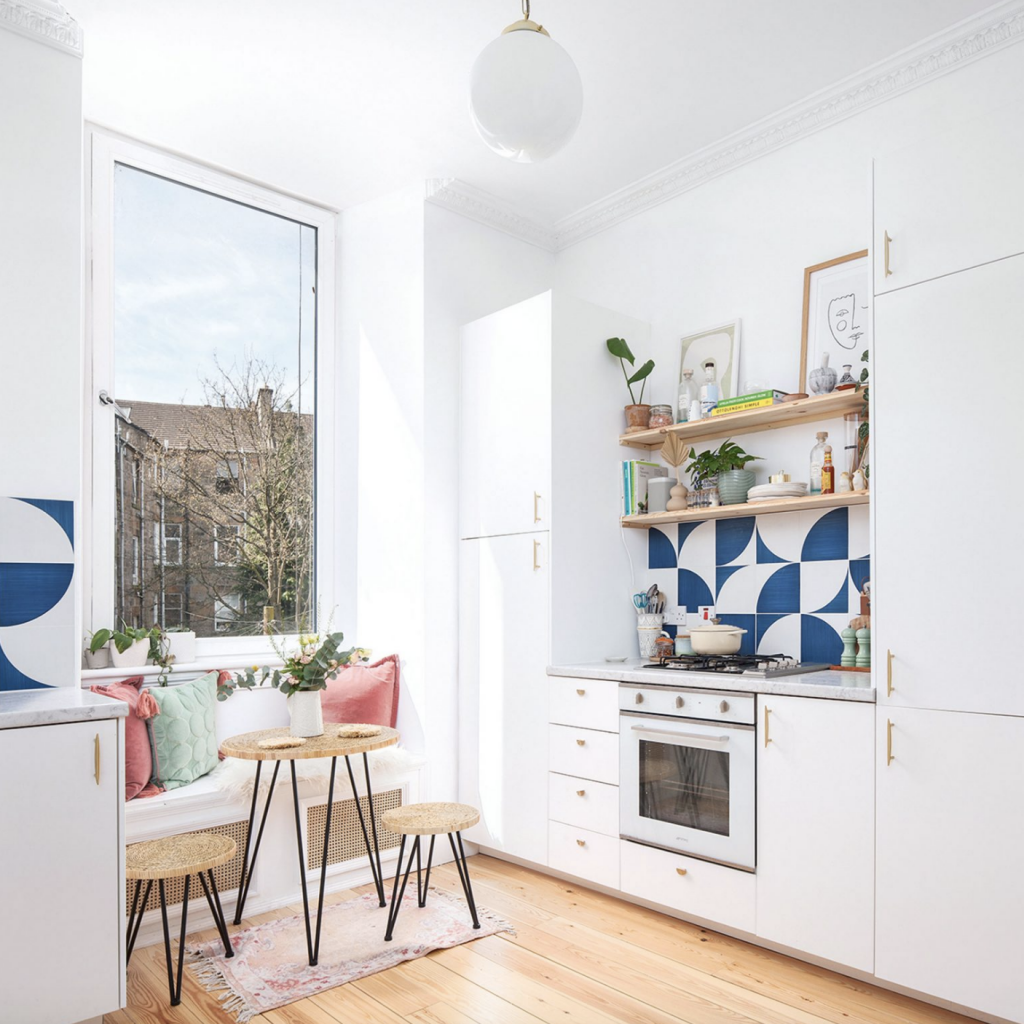
Rethinking your kitchen backsplash ideas is a simple way to add color to a white kitchen. Tiling is one of the most practical methods to accomplish this, so select a brightly colored patterned alternative for extra appeal. When it comes to patterns, stick to one new hue at a time, with some white thrown in for good measure.
You may have one major or multiple minor wall portions that require extra protection from day-to-day activity. If the latter, you may leave the regions the same or use a different tone or hue for more drama in one location.
4. STAND ALONE CABINETRY, GIVE IT SOME PAINT
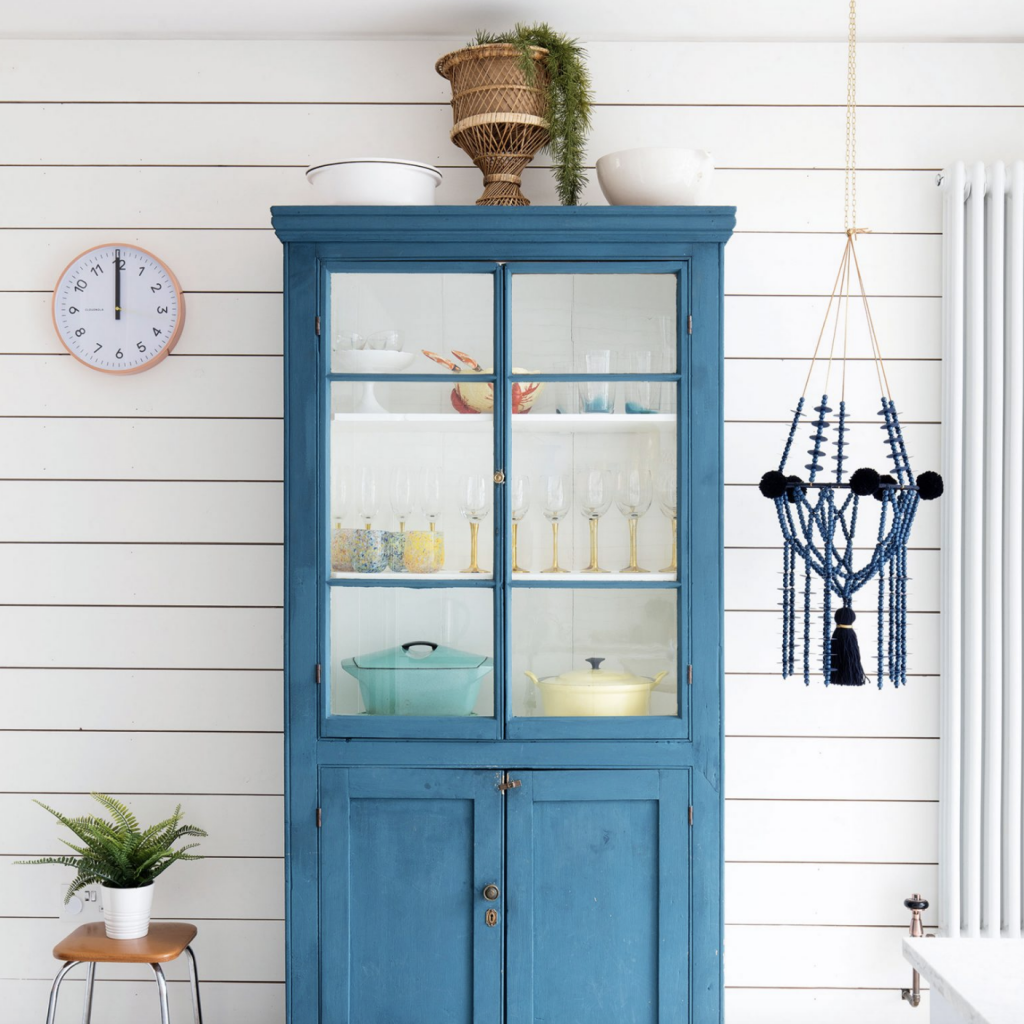
In addition to built-in cabinets, many kitchens will incorporate stand-alone storage units. Make use of this chance to add a splash of color. Purchase a bright unit or repaint the one you currently have. If you choose the latter, be sure to look into the best paint for kitchen cabinets to make your life simpler.
When selecting a color, think about how it will complement any other colors that are already in use. For ideas, look to your window coverings, tiny decorations, or even your dinnerware.
5. INCLUDE NATURAL TEXTURES AND TONES
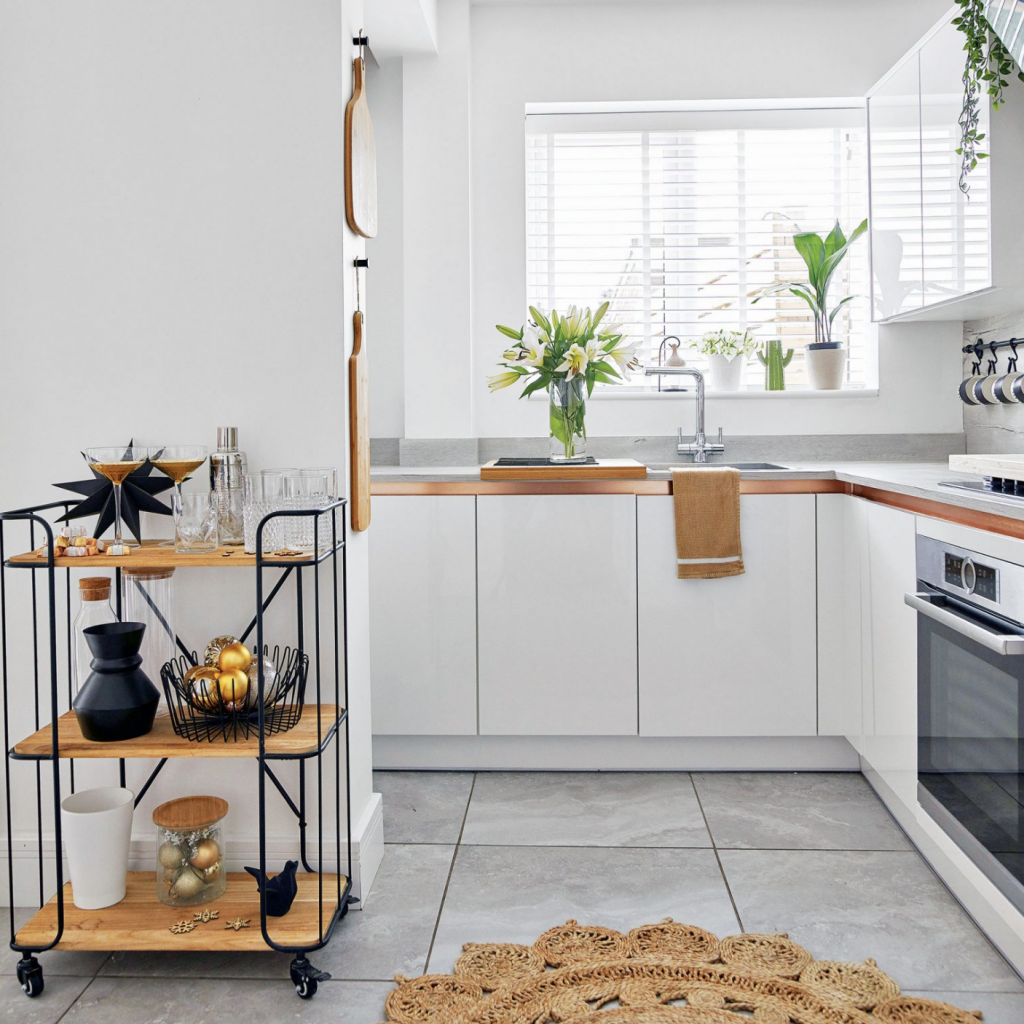
By using natural materials, you may add color and depth to your white kitchen by looking to rustic kitchen ideas. Natural textures and patina are added by wood, raffia, and colorful metals without detracting from the bland environment.
Consider using natural materials in your hardware as well. Leather handles or brass taps are possibilities.
6. BUY STATEMENT HOODING
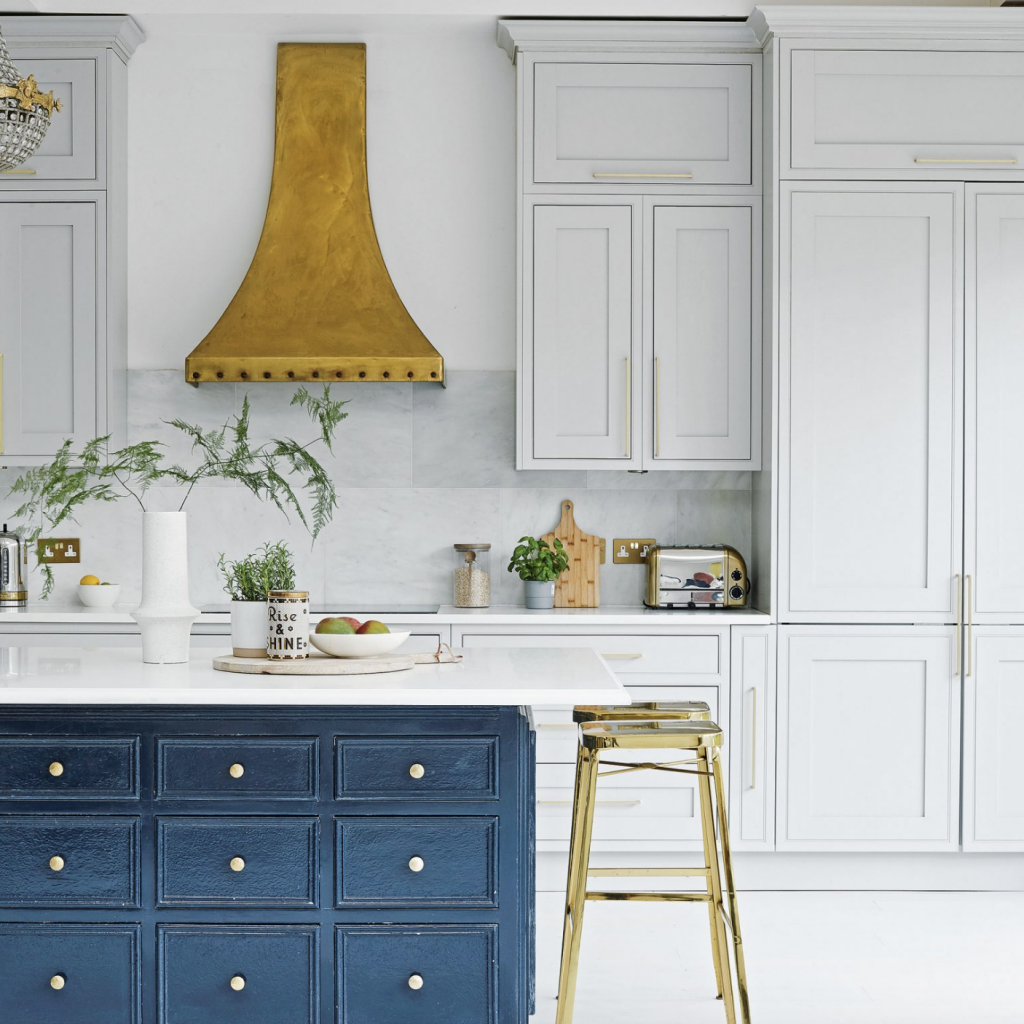
Rather of hiding your range hood, make a statement with it by adding color to a white kitchen. A bright metallic pick will give a major punch of elegance to the area, and you can incorporate the metal throughout the space through handles, plug outlets, and even your silverware.
If you want to have some fun, search for a brightly colored choice, such as painted metal or wood.
7. SET UP A BLACKBOARD SPACE
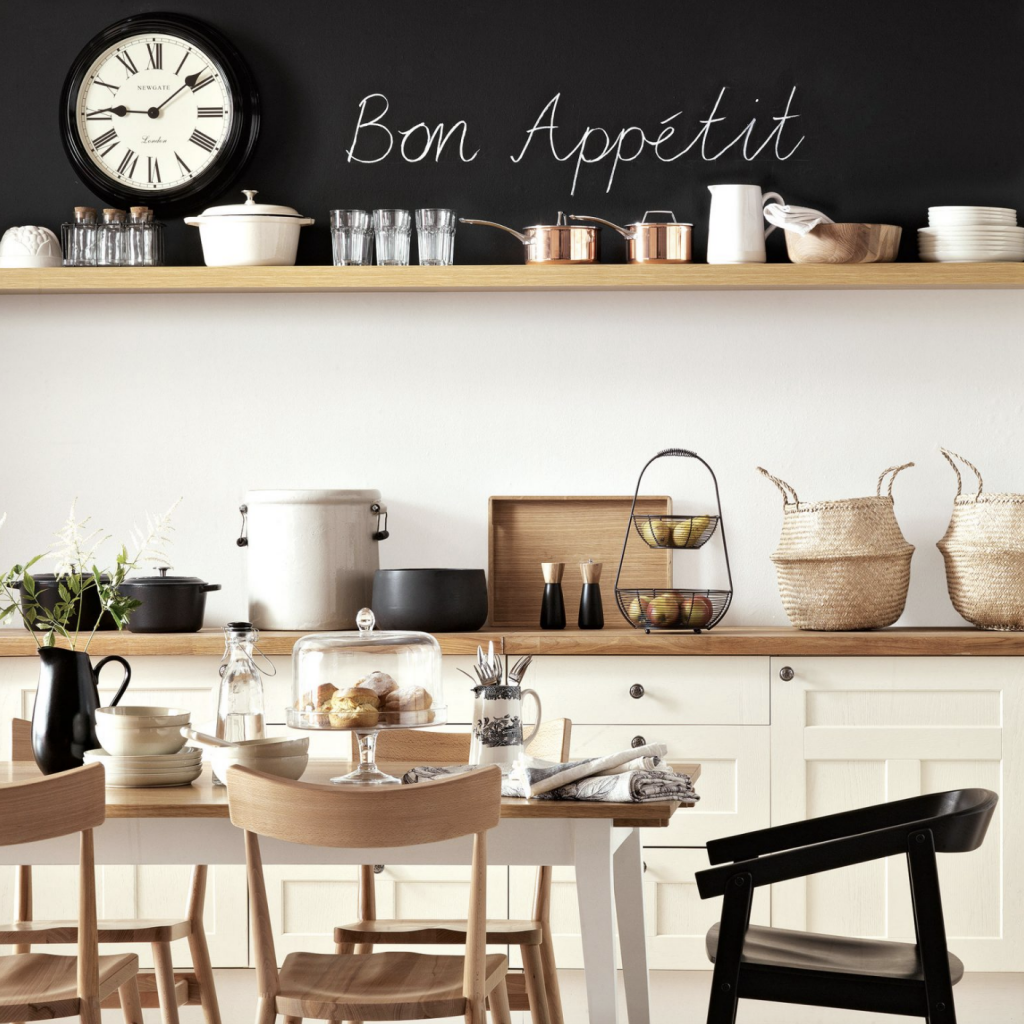
For a touch of cafe flair, put a strip of blackboard paint on the wall above an open shelf all the way to the ceiling. Stick to your theme by using white chalk, or keep additional colored chalks on hand to add more rainbow hues as needed.
8. DECORATE YOUR CABINETS ON THE INSIDE
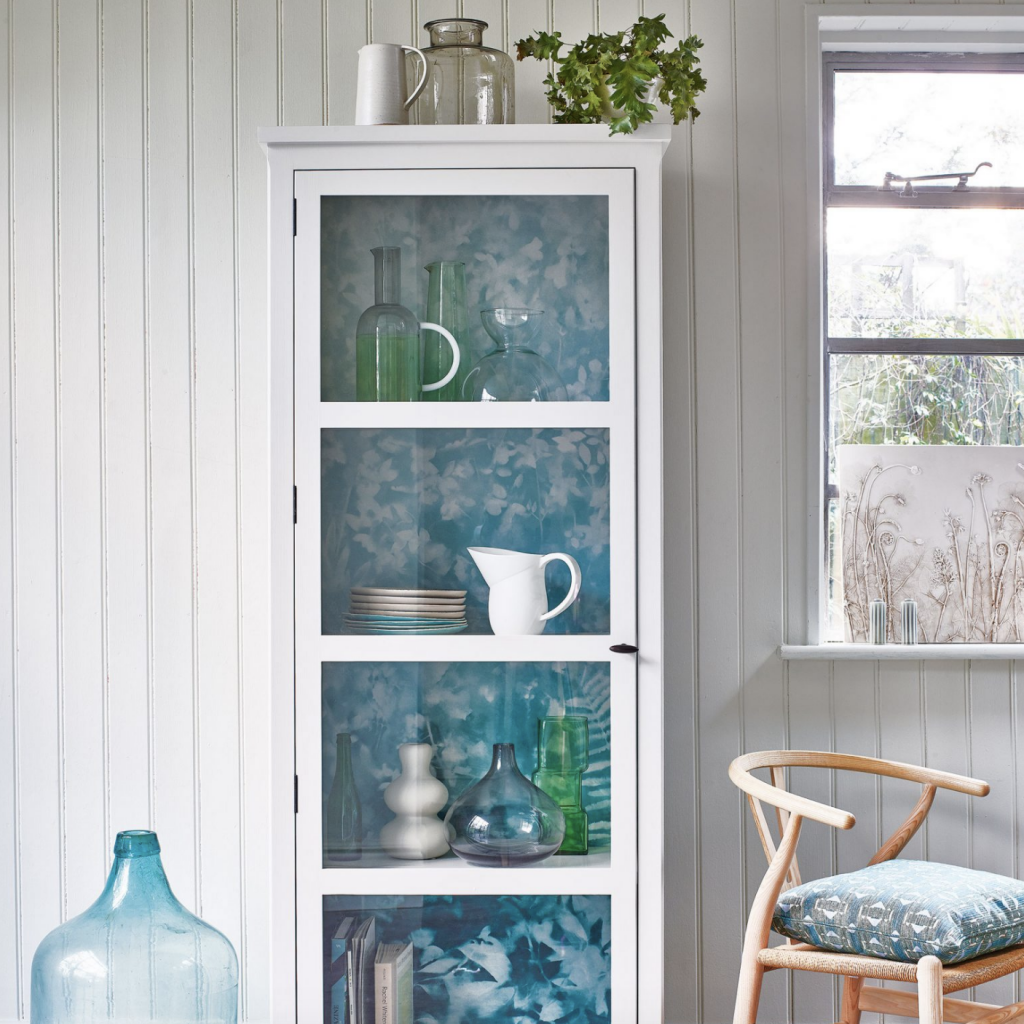
Color may be added to a white kitchen by painting the backs of cabinets and shelves, as well as the insides of drawers. Make use of these normally overlooked areas to provide surprising impact and individuality.
These nooks should be wallpapered or painted. It’s always good studying how to paint kitchen cabinets so that you can easily re-do them when you feel the need to.
9. COLORED LIGHT SHADES CAN BE INCLUDED
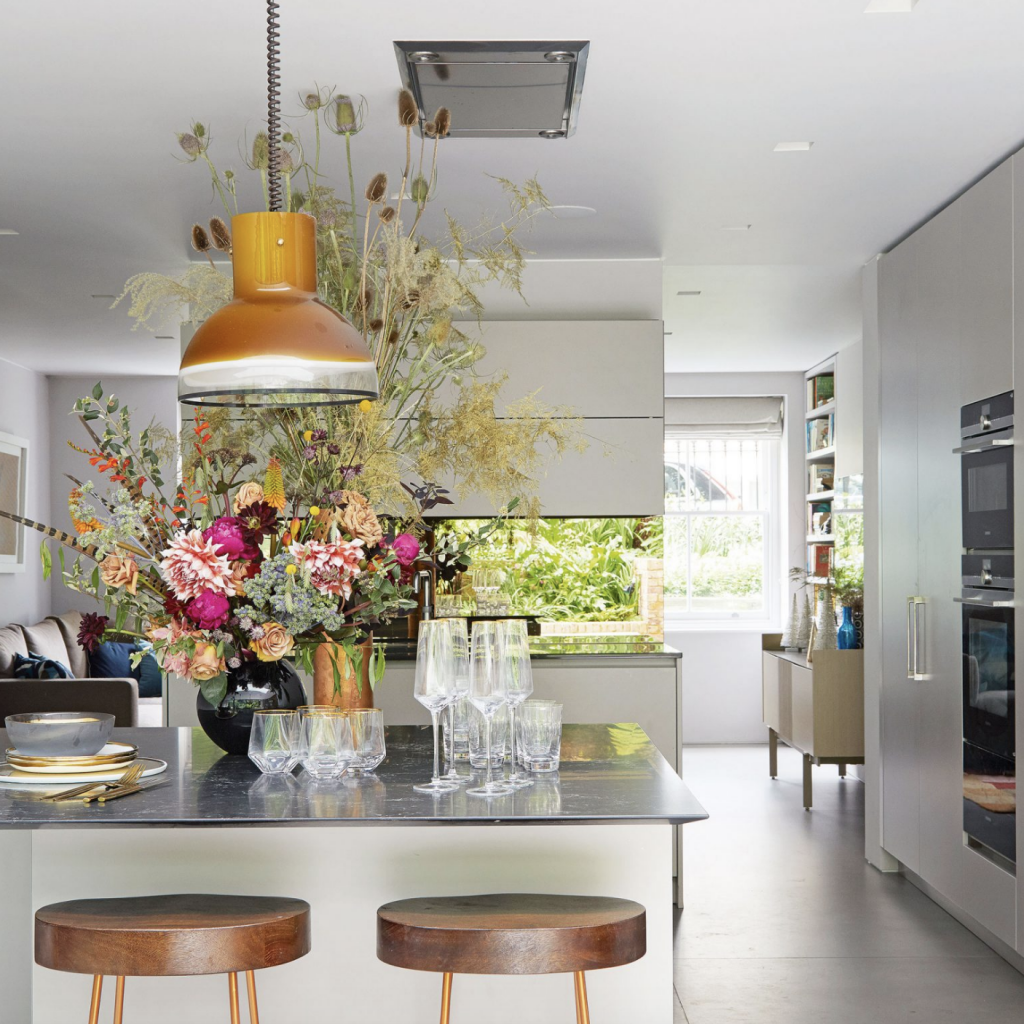
We adore a statement pendant light in a kitchen, so take advantage of this opportunity to add a splash of color. You don’t have to go overboard with your kitchen lighting ideas color selections – be as dramatic or as conservative as you choose.
Be mindful that the light cast by colored shades varies. Glass and material hues in oranges, pinks, and reds provide a warm light, whilst blues and greens produce a colder impression. Metal choices have a low impact on light since they are maintained white on the inside.
10. ADD A BLACK POP
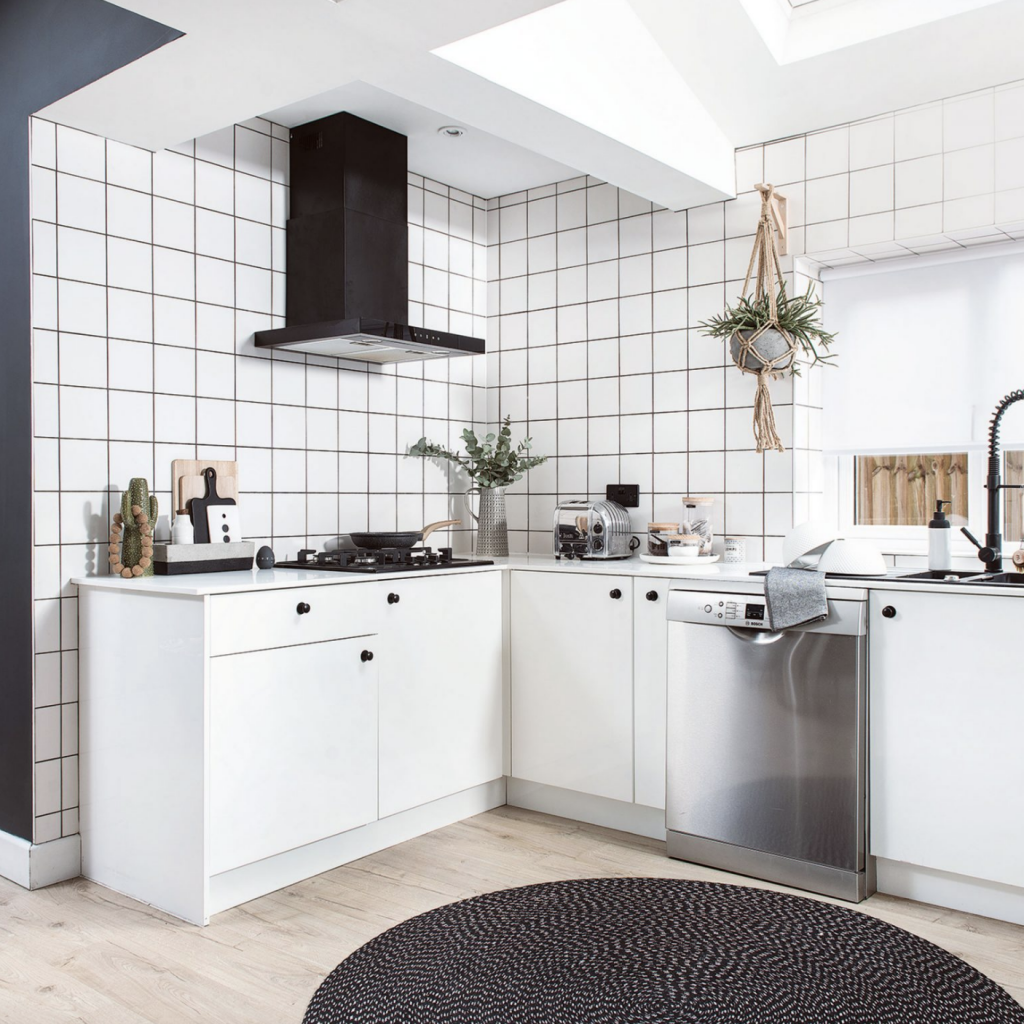
With black and white kitchen ideas, you may refresh an all-white kitchen and dining area. This timeless black and white pair doesn’t have to belong just in a modern area; it’s equally at home in a classic or rural kitchen.
Matte black finishes, rather than anything too shiny, work well with this aesthetic, so choose artisanal pottery, traditional spindle-back chairs, or a basic pendant lamp.
11. BUY COLORFULL APPLIANCES

Brightly colored appliances should not be avoided. Because they’re such a large investment, be sure you’re delighted with the color you chose. Pastel tones are ideal for a gentle splash of color in a rural decor. For a modern or retro-style kitchen, use vivid brights, and for a classic kitchen, use rich heritage tones.
12. USE WOOD TO INCREASE WARMTH.
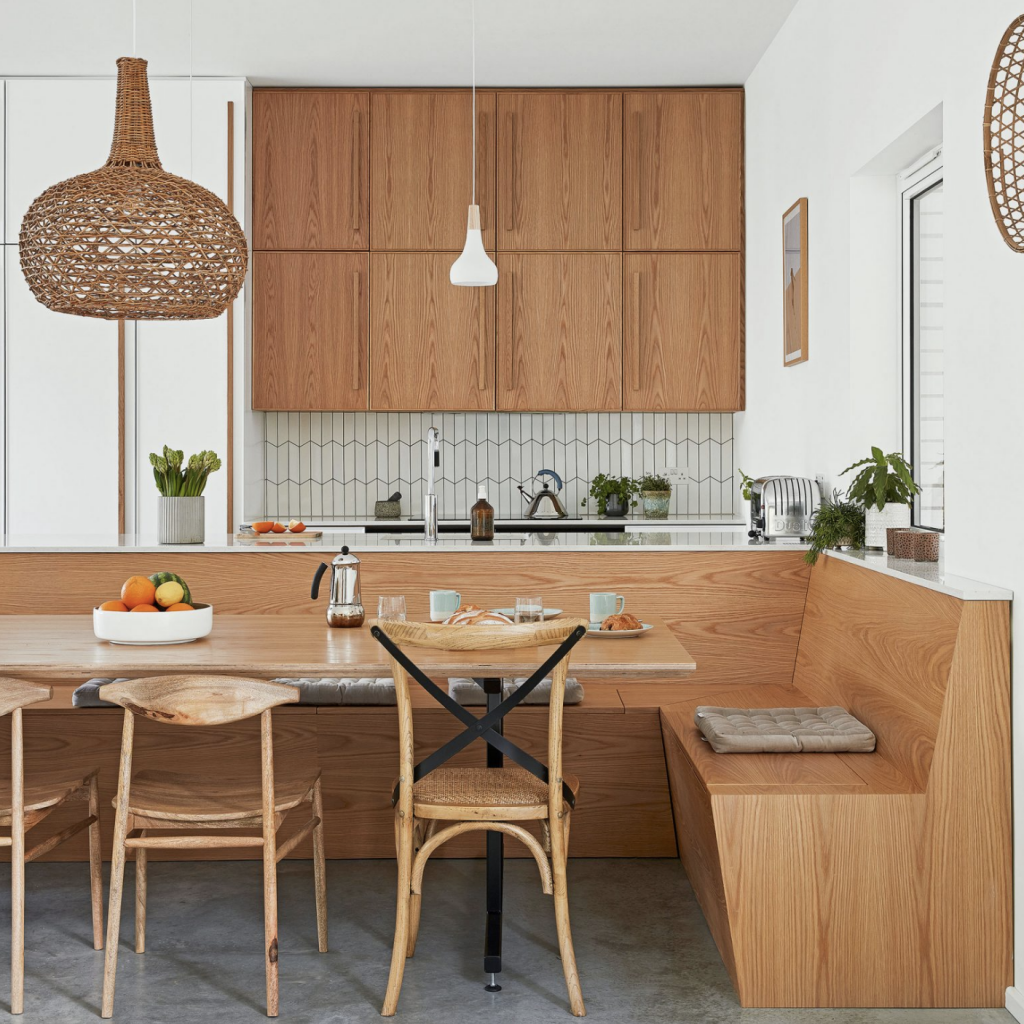
Because wood is a neutral in and of itself, it is a natural complement to otherwise white kitchens. Choose a single wood tone and apply it generously. You may use it for your table and chairs, as well as your cabinets and lighting.
Lighter wood tones will seem warmer against the white, while darker tones will make a more striking contrast.
13. SELECT CONTRASTING PANELING
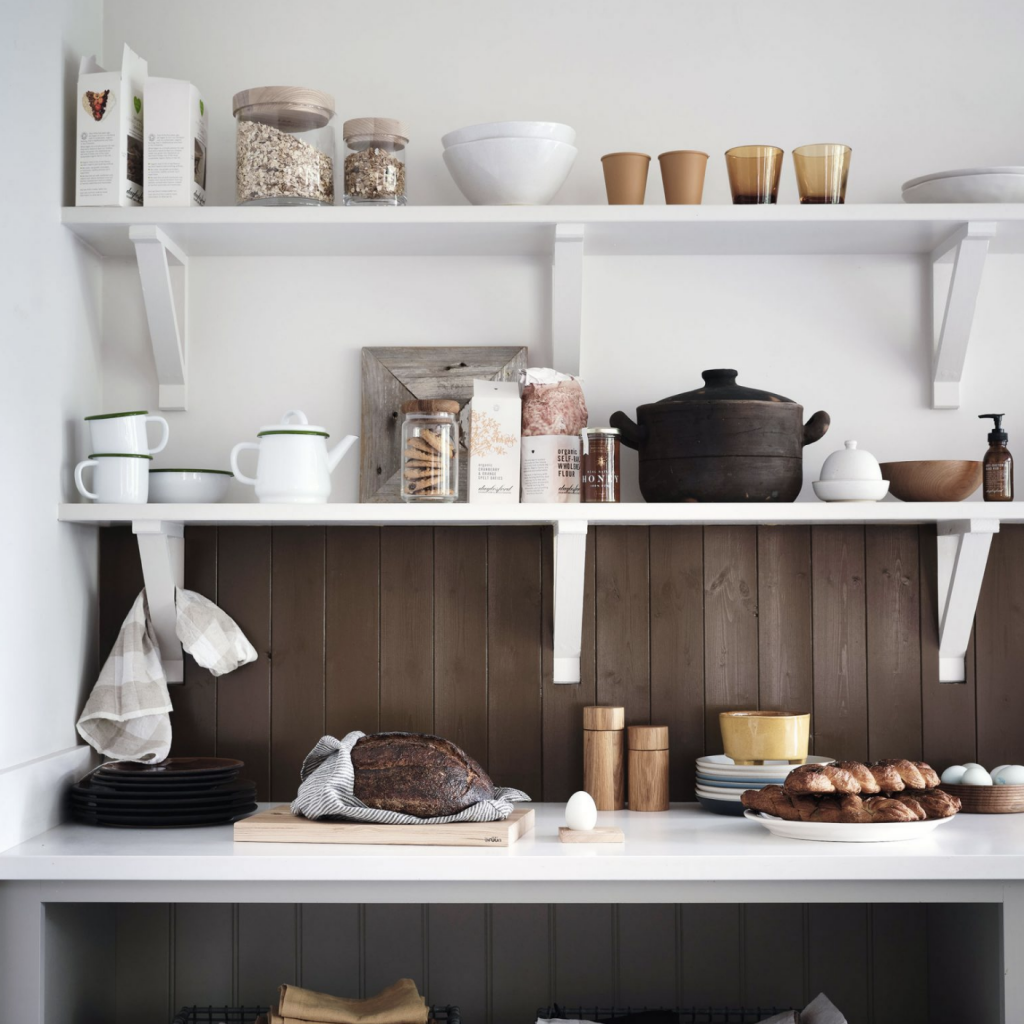
Use stained, paneled wood as a backsplash to upgrade your kitchen on any budget. Continue this along the wall behind open shelving to make a rustic-style display.
You don’t have to limit yourself to brown. Wood stains come in a variety of hues, so you’ll have lots of options. Remember that stains react differently on different types of wood, so always test stain a section or a spare board first.
14. WALL SECTIONS CAN BE PAINTED
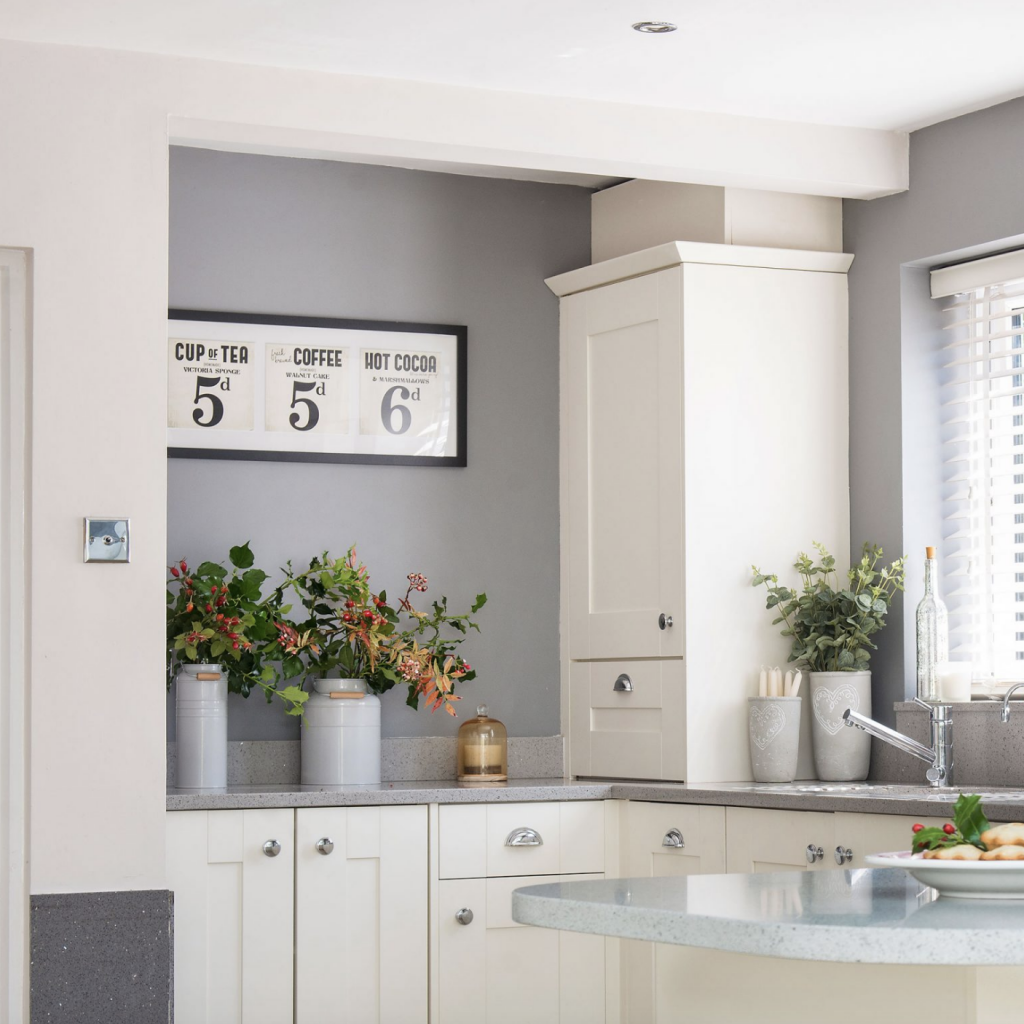
Even in the smallest of kitchens, there are bound to be sections of wall separated from the rest. This could either be from cabinetry or just alcoves from how the room has been built.
Paint these smaller sections in a color other than white for a splash of color without committing to changing the scheme of the kitchen.
HOW DO YOU IMPACT AN ALL-WHITE KITCHEN?
It is not necessary for all white kitchens to be chilly and antiseptic. A few easy additions may quickly warm them up. Woods and other natural materials contribute to a sense of tranquility and warmth. Similarly, flora, whether real or fake, will offer a fresh atmosphere. Lighting, on the other hand, has a significant influence. Make sure you choose the proper sort of white paint in your kitchen to create a warm, rather than a chilly, atmosphere. This will be influenced by the amount of natural light available, the direction from which the light is coming, as well as the size and form of the room.
WHAT COLORS WORK WELL IN A WHITE KITCHEN?
White is the most neutral of all the neutrals, and as a result, it goes with everything! However, there are several hues of white available, and certain tones of white complement other colors better. Always seek for, or inquire about, the undertones. These will aid in determining where on the color palette you could be a suitable fit. When adding color to a white kitchen, it’s crucial to always experiment because the combinations might seem different at different times of day.



